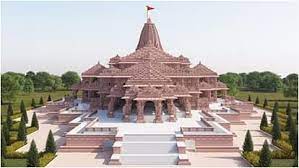Context-
The Ramayana, one of the most revered ancient texts, has transcended geographical and cultural boundaries, captivating the hearts and minds of people across South Asia. 'Three hundred Ramayanas,' ignited a controversy by highlighting the myriad languages in which the epic has been written, ranging from Sanskrit to Balinese, reflecting the diverse interpretations it has undergone.
Indian Literatures Values:
Indian literature spans a variety of literary forms, including epics, songs, dramatic and didactic poetry, narrative and scientific writing, as well as oral poetry and music. Two ancient Indian epics are the Ramayana and the Mahabharata. Before the Gupta dynasty, a lot of secular literary works were produced. During this time, poetry and drama were in their prime.
The principal topics of these works included political events, allegories, comedies, romances, and philosophical issues. In Southern India, ancient Indian writings were written in Tamil, Telugu, Kannada, and Malayalam, four Dravidian languages that also established their literature and script.
Various versions of the Ramayana as told in different parts of India and Southeast Asia, revealing the dynamic nature of this timeless epic:-
Valmiki Ramayana:
The oldest known version of the Ramayana traces its origins back to the eighth century BC. Sage Valmiki, credited as its author, never claimed to be the primary source but attributed it to another sage, Narada. This rendition lays the foundation for subsequent interpretations and serves as a cultural touchstone in the Indian subcontinent.
Kamba Ramayana:
Influenced by political motives, the Chola dynasty commissioned the Kamba Ramayana, a Tamil version written by the poet Kamban. This early adaptation portrayed Rama as a divine figure, distinct from Valmiki's portrayal of him as a mortal. The Kamba Ramayana thus intertwines political influence with religious narrative, showcasing the flexibility of the epic.
Bhojaprabandh:
King Bhoja, ruling in modern-day Madhya Pradesh, created the Bhojaprabandh in the 11th century, intertwining the Ramayana with his political legitimacy. Declaring himself an incarnation of Rama and Dhar as Ayodhya, Bhoja sought to solidify his authority by aligning with the revered epic, illustrating the Ramayana's adaptability in serving political agendas.
Tulsidas Ramayana:
The 16th-century Tulsidas Ramayana, written in Awadhi, is often considered the "people's version." Unlike the classical Sanskrit, Awadhi was widely spoken, making Tulsidas's rendition more accessible to the masses. This version, rooted in the vernacular, is seen as a reflection of the authentic Ramayana experience for the common people.
Reamker (Cambodia):
Cambodia's Reamker, influenced by Theravada Buddhism, incorporates Buddhist elements into the narrative. Rama becomes Phreah Ream, and Sita, Neang Seda. The divergence from Hindu texts is notable after Sita's trial by fire, where she chooses to leave Rama and seek refuge with Valmiki, showcasing the adaptation of the epic within different religious contexts.
Ramayana Kakawin (Indonesia, Bali):
The Kakawin Ramayana, the oldest Javanese epic text dating back to the ninth century CE, survives through palm-leaf manuscripts. Its linguistic ties to Sanskrit literature reveal the Javanese people's familiarity with the ancient language. The Kakawin Ramayana reflects the interconnectedness of cultures, with Javanese interpretations borrowing from Sanskrit prototypes.
Phra Lak Phra Ram (Laos):
In Laos, Phra Lak Phra Ram adapts the Ramayana to Theravada Buddhism. Here, Phra Ram is revered as a previous incarnation of Gautama Buddha, emphasizing moral leadership and adherence to dharma. The geographical shift along the Mekong River and the nuanced characterizations showcase the adaptability of the epic within diverse cultural and religious frameworks.
Hikayat Seri Rama (Malaysia):
Introduced to Malaysia by Tamil traders between the 13th and 15th centuries, the Hikayat Seri Rama presents a unique interpretation. Ravana is portrayed as more loyal and just than Seri Rama, challenging traditional notions. The emphasis on Rama's flaws and Lakshmana's expanded role adds a distinctive flavor to the Malaysian rendition.
Ramakien (Thailand):
The Thai adaptation of the Ramayana, known as Ramakien, has evolved since the 13th century. King Rama I's composition in the late 18th century introduces narrative changes, including Hanuman's departure from celibacy and a unique twist to Sita's fidelity. These alterations demonstrate the adaptability of the epic to suit cultural and temporal contexts.
Maharadia Lawana, Darangen (Philippines):
The Darangen, an epic song of the Maranao people in the Philippines, intertwines the Ramayana with local folk tales. This Muslim Filipino version includes episodes like the abduction of Princess Gandingan, showcasing the fusion of the Ramayana with indigenous narratives and the enduring impact on traditional performances like the Singkil dance.
Dasharata Jataka:
The Dasharata Jataka, the Buddhist rendition of the Ramayana, takes a narrative departure by having Dasharata himself send Rama, Sita, and Laxman to exile in the Himalayas for their protection. This unique twist aligns with Buddhist principles, highlighting the adaptability of the epic to convey moral lessons within different religious frameworks.
Conclusion:
The Ramayana's rich tapestry of interpretations across South Asia reflects its enduring appeal and adaptability. From Valmiki's ancient narrative to regional versions shaped by political, cultural, and religious contexts, the epic continues to evolve. Each retelling adds layers to the collective cultural consciousness, ensuring that the Ramayana lives on not as a static text but as a dynamic, ever-changing story that resonates with people from diverse backgrounds. As the epic remains deeply ingrained in the minds of millions, its journey through time and varied interpretations testifies to its universal relevance.
|
Probable Questions for UPSC Mains Exam-
|
Source- The Indian Express







